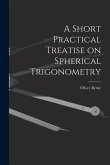Magnus J Wenninger
Spherical Models
Magnus J Wenninger
Spherical Models
- Broschiertes Buch
- Merkliste
- Auf die Merkliste
- Bewerten Bewerten
- Teilen
- Produkt teilen
- Produkterinnerung
- Produkterinnerung
Well-illustrated, practical approach to creating star-faced spherical forms that can serve as basic structures for geodesic domes. Complete instructions for making models from circular bands of paper with just a ruler and compass. 1979 edition.
Andere Kunden interessierten sich auch für
![Euclid's Elements of Geometry, the First Six Books: To Which Are Added, Elements of Plain and Spherical Trogonometry, a System of Conick Sections, Ele Euclid's Elements of Geometry, the First Six Books: To Which Are Added, Elements of Plain and Spherical Trogonometry, a System of Conick Sections, Ele]() John AllenEuclid's Elements of Geometry, the First Six Books: To Which Are Added, Elements of Plain and Spherical Trogonometry, a System of Conick Sections, Ele26,99 €
John AllenEuclid's Elements of Geometry, the First Six Books: To Which Are Added, Elements of Plain and Spherical Trogonometry, a System of Conick Sections, Ele26,99 €![An Elementary Treatise on Plane and Spherical Trigonometry An Elementary Treatise on Plane and Spherical Trigonometry]() Silvestre François LacroixAn Elementary Treatise on Plane and Spherical Trigonometry18,99 €
Silvestre François LacroixAn Elementary Treatise on Plane and Spherical Trigonometry18,99 €![An Elementary Treatise on Spherical Trigonometry [microform]: With Applications to Geodesy and Astronomy, Intended for the Use of Practical Science St An Elementary Treatise on Spherical Trigonometry [microform]: With Applications to Geodesy and Astronomy, Intended for the Use of Practical Science St]() John MathesonAn Elementary Treatise on Spherical Trigonometry [microform]: With Applications to Geodesy and Astronomy, Intended for the Use of Practical Science St17,99 €
John MathesonAn Elementary Treatise on Spherical Trigonometry [microform]: With Applications to Geodesy and Astronomy, Intended for the Use of Practical Science St17,99 €![Elements of Plane and Spherical Trigonometry Elements of Plane and Spherical Trigonometry]() Olinthus GregoryElements of Plane and Spherical Trigonometry22,99 €
Olinthus GregoryElements of Plane and Spherical Trigonometry22,99 €![Applications of Plane and Spherical Trigonometry Applications of Plane and Spherical Trigonometry]() Eugene Lamb RichardsApplications of Plane and Spherical Trigonometry17,99 €
Eugene Lamb RichardsApplications of Plane and Spherical Trigonometry17,99 €![Analytic and Practical Plane and Spherical Trigonometry [microform]: for the Use of Colleges and Schools Analytic and Practical Plane and Spherical Trigonometry [microform]: for the Use of Colleges and Schools]() Analytic and Practical Plane and Spherical Trigonometry [microform]: for the Use of Colleges and Schools20,99 €
Analytic and Practical Plane and Spherical Trigonometry [microform]: for the Use of Colleges and Schools20,99 €![A Short Practical Treatise on Spherical Trigonometry A Short Practical Treatise on Spherical Trigonometry]() Oliver ByrneA Short Practical Treatise on Spherical Trigonometry14,99 €
Oliver ByrneA Short Practical Treatise on Spherical Trigonometry14,99 €-
-
-
Well-illustrated, practical approach to creating star-faced spherical forms that can serve as basic structures for geodesic domes. Complete instructions for making models from circular bands of paper with just a ruler and compass. 1979 edition.
Produktdetails
- Produktdetails
- Verlag: Dover Publications
- Erscheinungstermin: 13. Juni 2012
- Englisch
- Abmessung: 277mm x 205mm x 11mm
- Gewicht: 454g
- ISBN-13: 9780486409214
- ISBN-10: 048640921X
- Artikelnr.: 21599008
- Herstellerkennzeichnung
- Libri GmbH
- Europaallee 1
- 36244 Bad Hersfeld
- gpsr@libri.de
- Verlag: Dover Publications
- Erscheinungstermin: 13. Juni 2012
- Englisch
- Abmessung: 277mm x 205mm x 11mm
- Gewicht: 454g
- ISBN-13: 9780486409214
- ISBN-10: 048640921X
- Artikelnr.: 21599008
- Herstellerkennzeichnung
- Libri GmbH
- Europaallee 1
- 36244 Bad Hersfeld
- gpsr@libri.de
Foreword by Arthur L. Loeb Preface Introduction: Basic properties of the
sphere I. The regular spherical models The spherical hexahedron or cube
General instructions for making models The spherical octahedron The
spherical tetrahedron The spherical icosahedron and dodecahedron The
polyhedral kaleidoscope Summary II. The semiregular spherical models The
spherical cuboctahedron The spherical icosidodecahedron Spherical triangles
as characteristic triangles The five truncated regular spherical models The
rhombic spherical models The rhombitruncated spherical models The snub
forms as a spherical models The spherical duals Summary III. Variations
Regular and semiregular variations Star-faced spherical models IV. Geodesic
domes The simplest geodesic domes Geodesic domes derived from the
icosahedron General instructions for making geodesic models An alternative
method of approaching geodesic segmentation Introduction to geodesic
symbolism and classification Geodesic models derived from the dodecahedron
An alternative for geodesic segmentation of the dodecahedron A second
alternative for geodesic segmentation of the icosahedron An alternative for
geodesic segmentation of the snub dodecahedron A third alternative for
geodesic segmentation of the icosahedron Final comments V. Miscellaneous
models "Honeycomb models, edge models, and nolids" An introduction to the
notion of polyhedral density Edge models of stellated forms Some final
comments about geodesic domes Epilogue Appendix References List of models
sphere I. The regular spherical models The spherical hexahedron or cube
General instructions for making models The spherical octahedron The
spherical tetrahedron The spherical icosahedron and dodecahedron The
polyhedral kaleidoscope Summary II. The semiregular spherical models The
spherical cuboctahedron The spherical icosidodecahedron Spherical triangles
as characteristic triangles The five truncated regular spherical models The
rhombic spherical models The rhombitruncated spherical models The snub
forms as a spherical models The spherical duals Summary III. Variations
Regular and semiregular variations Star-faced spherical models IV. Geodesic
domes The simplest geodesic domes Geodesic domes derived from the
icosahedron General instructions for making geodesic models An alternative
method of approaching geodesic segmentation Introduction to geodesic
symbolism and classification Geodesic models derived from the dodecahedron
An alternative for geodesic segmentation of the dodecahedron A second
alternative for geodesic segmentation of the icosahedron An alternative for
geodesic segmentation of the snub dodecahedron A third alternative for
geodesic segmentation of the icosahedron Final comments V. Miscellaneous
models "Honeycomb models, edge models, and nolids" An introduction to the
notion of polyhedral density Edge models of stellated forms Some final
comments about geodesic domes Epilogue Appendix References List of models
Foreword by Arthur L. Loeb Preface Introduction: Basic properties of the
sphere I. The regular spherical models The spherical hexahedron or cube
General instructions for making models The spherical octahedron The
spherical tetrahedron The spherical icosahedron and dodecahedron The
polyhedral kaleidoscope Summary II. The semiregular spherical models The
spherical cuboctahedron The spherical icosidodecahedron Spherical triangles
as characteristic triangles The five truncated regular spherical models The
rhombic spherical models The rhombitruncated spherical models The snub
forms as a spherical models The spherical duals Summary III. Variations
Regular and semiregular variations Star-faced spherical models IV. Geodesic
domes The simplest geodesic domes Geodesic domes derived from the
icosahedron General instructions for making geodesic models An alternative
method of approaching geodesic segmentation Introduction to geodesic
symbolism and classification Geodesic models derived from the dodecahedron
An alternative for geodesic segmentation of the dodecahedron A second
alternative for geodesic segmentation of the icosahedron An alternative for
geodesic segmentation of the snub dodecahedron A third alternative for
geodesic segmentation of the icosahedron Final comments V. Miscellaneous
models "Honeycomb models, edge models, and nolids" An introduction to the
notion of polyhedral density Edge models of stellated forms Some final
comments about geodesic domes Epilogue Appendix References List of models
sphere I. The regular spherical models The spherical hexahedron or cube
General instructions for making models The spherical octahedron The
spherical tetrahedron The spherical icosahedron and dodecahedron The
polyhedral kaleidoscope Summary II. The semiregular spherical models The
spherical cuboctahedron The spherical icosidodecahedron Spherical triangles
as characteristic triangles The five truncated regular spherical models The
rhombic spherical models The rhombitruncated spherical models The snub
forms as a spherical models The spherical duals Summary III. Variations
Regular and semiregular variations Star-faced spherical models IV. Geodesic
domes The simplest geodesic domes Geodesic domes derived from the
icosahedron General instructions for making geodesic models An alternative
method of approaching geodesic segmentation Introduction to geodesic
symbolism and classification Geodesic models derived from the dodecahedron
An alternative for geodesic segmentation of the dodecahedron A second
alternative for geodesic segmentation of the icosahedron An alternative for
geodesic segmentation of the snub dodecahedron A third alternative for
geodesic segmentation of the icosahedron Final comments V. Miscellaneous
models "Honeycomb models, edge models, and nolids" An introduction to the
notion of polyhedral density Edge models of stellated forms Some final
comments about geodesic domes Epilogue Appendix References List of models

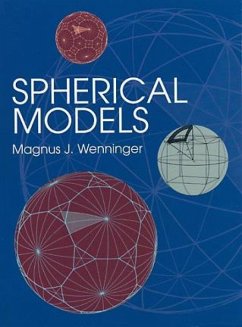
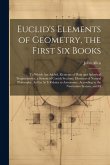
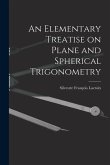
![An Elementary Treatise on Spherical Trigonometry [microform]: With Applications to Geodesy and Astronomy, Intended for the Use of Practical Science St An Elementary Treatise on Spherical Trigonometry [microform]: With Applications to Geodesy and Astronomy, Intended for the Use of Practical Science St](https://bilder.buecher.de/produkte/66/66189/66189180m.jpg)
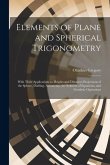
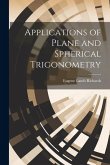
![Analytic and Practical Plane and Spherical Trigonometry [microform]: for the Use of Colleges and Schools Analytic and Practical Plane and Spherical Trigonometry [microform]: for the Use of Colleges and Schools](https://bilder.buecher.de/produkte/65/65527/65527421m.jpg)
